Hiking is one of the best ways to connect with nature and enjoy the great outdoors, but having the right knowledge and hiking gear is crucial for a safe and enjoyable adventure. Whether you're a seasoned hiker or just starting out, understanding the essentials will help you navigate the trails with confidence.
However, don’t worry if you feel confused about selecting the essential hiking and camping gear for your next adventure because we’ve got you covered with this article.
In this comprehensive guide, we’ll explore the must-have hiking gear, essential safety tips, and practical advice to ensure your hikes are not only fun but also safe. Therefore, we invite you to keep reading and discover everything you need to know to make the most of your next trail adventure.
Without further ado, let’s get started to find out the essential gear items…
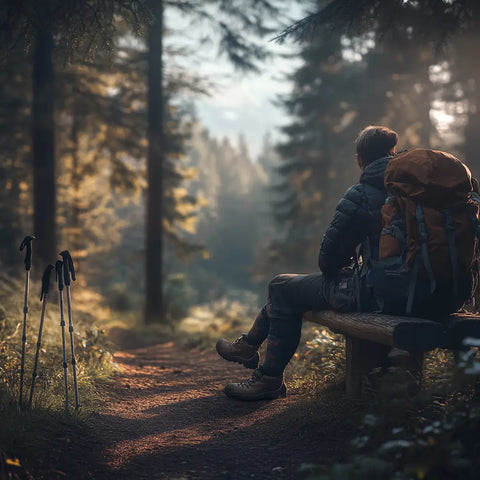
1. Backpack
A hiking backpack is crucial for carrying all your gear, food, and water during your hike. It helps distribute weight evenly across your body, preventing fatigue and discomfort on the trail. A well-fitted backpack ensures that you can carry everything you need while keeping your hands free for climbing or navigating.
Key Features:
-
Capacity: Hiking backpacks come in various sizes, typically ranging from 15L for short day hikes to 50L or more for multi-day treks. Choose the size based on the length of your hike.
-
Fit: A backpack with adjustable straps (shoulder, chest, and hip) will ensure comfort and even weight distribution. Look for padded straps for extra comfort.
-
Material: Durable, weather-resistant fabrics like nylon or polyester help protect your gear from the elements. Waterproof covers can also be included.
-
Compartments: Multiple compartments or pockets help organize your gear, making it easy to access items like snacks, a map, or a first aid kit.
-
Hydration system compatibility: Some backpacks come with a built-in hydration system or a pocket to store a hydration reservoir, keeping you hydrated without needing to stop.
How to Use It:
Pack your backpack with essential items, ensuring that heavier items are placed closer to your back and lower in the pack for better balance. Use the waist straps to secure the pack and reduce pressure on your shoulders, adjusting them to fit snugly.
Furthermore, make sure to pack out what you pack in, keeping the weight manageable for your hike.
Why You Need It:
Without a proper backpack, you risk carrying items in an unorganized manner, which can lead to discomfort, fatigue, and difficulty accessing gear. A backpack ensures that you have everything you need within reach and helps distribute weight properly to minimize strain, making your hike more comfortable and enjoyable.
Our Top Recommendations For Backpacks:
-
Large Tactical Duffle Bag By Camp Supreme.
-
Hiking Backpack By Camp Supreme.
-
Highland Tactical Backpack By Camp Supreme.
2. Footwear
Footwear is one of the most important pieces of gear for any hike. Proper hiking shoes or boots protect your feet, provide support, and help you navigate different terrains safely. Whether you're trekking over rocky paths, muddy trails, or uneven ground, wearing the right footwear ensures comfort and minimizes the risk of blisters or injury.
Key Features:
-
Support: Hiking boots or shoes should offer strong ankle support, especially on uneven terrain. Look for boots with a firm, supportive structure and cushioning that reduces pressure on your feet.
-
Traction: A quality hiking shoe should have deep lugs or a patterned sole that provides excellent grip on slippery or rocky surfaces, preventing slips and falls.
-
Water Resistance: Waterproof footwear is ideal for wet conditions or muddy trails, keeping your feet dry and comfortable. Consider shoes with Gore-Tex or other water-resistant materials for added protection.
-
Breathability: Choose footwear with breathable materials to prevent your feet from overheating and sweating excessively during the hike. Mesh panels can help with ventilation.
-
Weight: Lighter hiking shoes are more comfortable for shorter hikes, while heavier boots offer added support and durability for long, rugged trails.
How to Use It:
When choosing hiking footwear, make sure they fit snugly but comfortably, with enough room for your toes to move freely. Lace them up securely, and use any ankle support straps if available. Break them in before your hike to avoid discomfort and blisters.
On your hike, check your feet regularly for hot spots or irritation and adjust your footwear if needed.
Why You Need It:
Without proper footwear, you risk developing painful blisters, sprains, or even foot fatigue that could cut your hike short. Proper shoes or boots ensure stability on various surfaces, enhance your comfort, and reduce the risk of injury, allowing you to enjoy the hike fully.
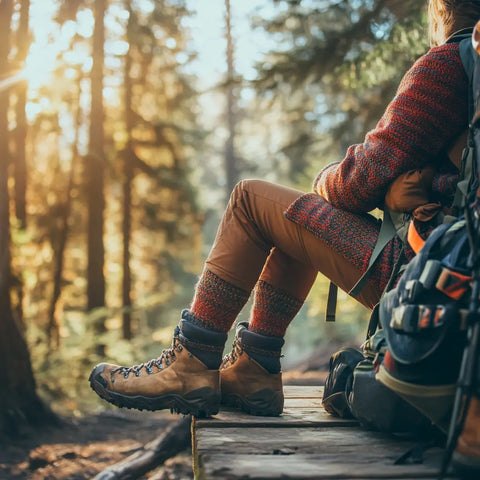
Our Top Recommendations For Footwear:
-
Hiking Boots For Men And Women By Camp Supreme.
-
Grey Boots Men's By Camp Supreme.
-
Outdoor Boots For Men By Camp Supreme.
3. Camping Tent: This Matters If you Wish to Spend the Night
A camping tent is a crucial piece of gear if you plan to spend the night outdoors. It provides shelter, protection from the elements, and a safe space for rest. Whether you’re hiking for a weekend or embarking on a multi-day trek, a reliable tent will ensure you stay dry, warm, and comfortable throughout your journey.
Key Features:
-
Size: Tents come in various sizes, typically ranging from one-person to multi-person models. Choose one based on the number of people in your group and the space you'll need for gear storage.
-
Weight: If you're hiking with your tent, lightweight tents are preferable to minimize the load. Look for ultralight options for longer treks where weight is a concern.
-
Weather Resistance: A good camping tent should be weatherproof, with features like a rainfly (water-resistant cover) to protect against rain. Make sure the tent has proper ventilation to avoid condensation inside.
-
Durability: The materials should be strong enough to withstand the elements, such as wind and rain. Look for tents made with durable fabrics, such as ripstop nylon, and reinforced poles for added stability.
-
Setup: Some tents are freestanding (easy to set up without stakes), while others require stakes for stability. Choose one that suits your preferences and skill level when setting up camp.
How to Use It:
Set up your tent on a flat, dry area away from hazards like falling rocks or water runoff. Use the tent poles to create the structure and secure the tent with stakes, ensuring it's taut and stable. Be sure to use the rainfly in case of inclement weather.
After your hike, clean and dry the tent before packing it away to prevent mold or mildew buildup.
Why You Need It:
-
Without a proper camping tent, you may find yourself exposed to the elements, which can lead to discomfort, poor sleep, and potentially dangerous situations in harsh weather.
-
A good tent ensures you have a dry, secure, and comfortable place to sleep, protecting you from rain, wind, and cold temperatures.
Our Top Recommendations For Camping Tents:
-
6x10 Camping tent By Camp Supreme.
-
Small Camp Tent By Camp Supreme.
-
Camo Camping Tent By Camp Supreme.
Additional Gear Recommendations:
-
Sleeping Bags By Camp Supreme.
-
Sleeping Pads & Mats By Camp Supreme.
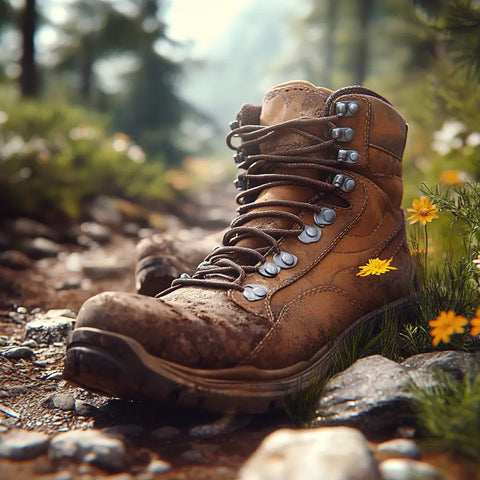
4. Navigation Tools
Navigation tools are vital for ensuring you stay on track during your hike, especially when traversing unfamiliar trails or backcountry areas. Whether you’re using a traditional map and compass or a GPS device, having reliable navigation tools helps you avoid getting lost and find your way if you need to reroute or return to camp.
Key Features:
-
Map: A topographic map provides detailed information about the terrain, elevations, trails, water sources, and other important landmarks. Always carry a paper map as a backup, even if you have a GPS.
-
Compass: A compass is essential for determining directions and orienting your map. It’s particularly useful when trails are not clearly marked or in dense forests where landmarks may be hard to spot.
-
GPS Device/Smartphone: A handheld GPS device or smartphone with offline mapping apps can be invaluable for tracking your location in real time. Many devices also allow you to mark waypoints, helping you retrace your steps if necessary.
-
Altimeter: Some GPS devices and watches include an altimeter, which measures elevation. This feature is particularly useful for hikers on mountain trails or areas with rapidly changing terrain.
-
Navigation Apps: Many apps are designed to assist hikers with route planning, navigation, and tracking, such as Gaia GPS, AllTrails, or Komoot. These apps offer detailed maps and trail information.
How to Use It:
Before your hike, study the map and familiarize yourself with key landmarks, trailheads, and the overall route. If using a compass, align it with the map to determine the correct direction. When using a GPS, enter your waypoints and make sure your device is fully charged.
During the hike, check your position regularly using your navigation tools to ensure you’re staying on course. In case you get lost, stop, reassess, and use your tools to retrace your steps or find a more familiar landmark.
Why You Need It:
Even well-marked trails can become confusing, especially if weather conditions or trail changes obscure your path. Without proper navigation tools, you risk getting lost, which can lead to dangerous situations, especially in remote areas.
Furthermore, navigation tools provide security and confidence, ensuring you can always find your way, even in unfamiliar environments.
Recommendations:
-
Carabiner Compass By Camp Supreme.
-
Flashlight Bracelet By Camp Supreme.
-
Military Compass By Camp Supreme.
-
Vintage Military Compass By Camp Supreme.
5. Water Supply
Staying hydrated is crucial for maintaining energy and preventing dehydration during your hike. Carrying an adequate water supply ensures you can safely manage the physical demands of hiking, especially in remote areas where water sources might be scarce or unreliable.
Furthermore, a reliable water supply also helps in regulating your body temperature, improving focus, and avoiding fatigue.
Key Features:
-
Water Bottles: A standard water bottle made from durable materials (like stainless steel or BPA-free plastic) is a reliable and reusable option. They come in various sizes (typically 500ml to 1L) to suit different needs.
-
Hydration Reservoir (Hydration Bladder): This system typically includes a flexible bladder that fits into your backpack and a tube that allows you to drink hands-free while hiking. Hydration bladders are ideal for long hikes and when you need to hydrate frequently without stopping.
-
Water Filters: In case you’re hiking in areas where water sources are available, but may not be safe to drink, a portable water filter or purification system (like a pump or squeeze filter) is a must-have. These tools allow you to safely drink water from rivers, streams, or lakes.
-
Water Purification Tablets: If you're carrying water from a natural source, these tablets can be used to purify water and kill harmful bacteria, viruses, or protozoa. They’re lightweight and easy to carry for emergencies.
-
Insulated Water Bottles: For cold-weather hikes, insulated bottles help keep your water from freezing in low temperatures, ensuring a drinkable supply throughout the day.
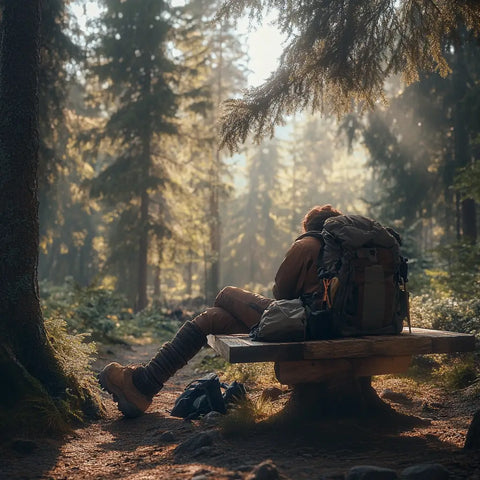
How to Use It:
When carrying a water bottle or hydration bladder, make sure it’s easily accessible so you can hydrate regularly. For water filters or purification tablets, know how to properly use them before relying on natural water sources. Water filters should be used according to manufacturer instructions (typically submerging the filter in water and squeezing or pumping to purify).
If using purification tablets, follow the correct dosage for your bottle’s volume, and wait the recommended time before drinking.
Why You Need It:
Without a proper water supply, you risk dehydration, which can lead to dizziness, fatigue, heatstroke, and a lack of focus. Dehydration also increases your vulnerability to other hiking risks.
Furthermore, a reliable water supply helps you stay healthy and comfortable throughout your hike, reducing the chances of needing to cut your hike short or risk serious health issues.
Recommendations:
-
Canten Water Bottles By Camp Supreme.
-
Camel Backpack Bladder By Camp Supreme.
-
Camp Shower Bags By Camp Supreme.
6. Food
Without proper food, your body will struggle to maintain energy levels, leading to fatigue, irritability, and even physical exhaustion. By carrying nutrient-dense, easy-to-prepare food, you’ll ensure that your body has the fuel it needs to handle the challenges of the trail and continue enjoying your adventure.
Key Features:
-
Lightweight & Compact: Hiking food should be easy to pack and carry. Choose compact options like energy bars, trail mix, and dehydrated meals, which are designed to minimize weight and bulk.
-
Nutrient-Dense: Since hiking requires a lot of energy, your food should be nutrient-dense, providing a balance of carbohydrates, protein, and fats to fuel your body. Nuts, seeds, dried fruits, and jerky are great sources of healthy fats and protein.
-
Shelf Stable: Hiking food needs to be non-perishable and able to withstand various weather conditions. Freeze-dried meals, vacuum-sealed packages, and packaged snacks are ideal since they can last without refrigeration.
-
Easy to Prepare: For longer hikes, you may need food that is quick and simple to prepare, like freeze-dried meals or instant oatmeal. Look for options that only require hot water for preparation, especially if you're camping along the way.
-
Water-Friendly: Since you'll need extra water for hydration, choose foods that don't require excessive water for preparation unless you plan on purifying water along the way.
How to Plan Your Cooking:
Before the hike, plan your meals and pack enough food for the duration of your trip. Include a variety of snacks to keep your energy levels up throughout the day, and consider packing one or two full meals if you're camping. Simply add hot water to the package and stir for easy-to-prepare foods like freeze-dried meals.
Furthermore, make sure to take regular breaks to refuel and stay energized, especially before tackling a tough section of the trail when hiking.
Recommendations:
For shorter day hikes, pack snacks like granola bars, trail mix, or fruit. Consider lightweight, freeze-dried meals from brands like Mountain House, Backpacker’s Pantry, or Peak Refuel for longer hikes or multi-day trips.
Furthermore, always have a combination of quick energy boosters (e.g., energy bars, dried fruits) and more substantial meals to keep you fueled throughout the journey.
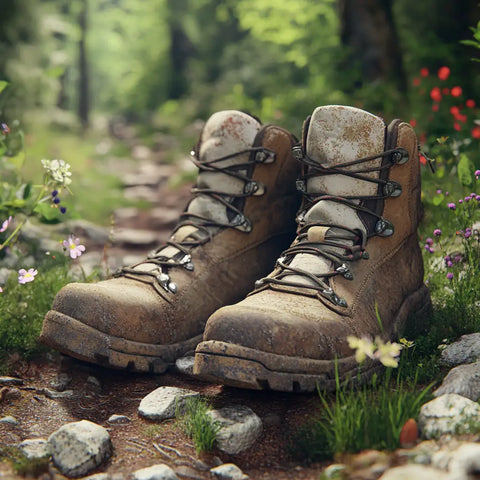
7. Clothing Layers
Layering helps regulate body temperature and ensures comfort in changing weather. It allows you to adjust your clothing to manage sweat, warmth, and protection from the elements.
Key Features:
-
Base Layer: The base layer is your first line of defense against the elements and helps wick away sweat from your skin. It should be moisture-wicking and breathable, typically made from synthetic fabrics (like polyester) or natural materials (like merino wool). This layer keeps you dry and prevents you from getting chilled due to perspiration.
-
Mid Layer: The mid layer is designed to provide insulation. It traps body heat to keep you warm without adding too much bulk. Common options for this layer include fleece jackets, down vests, or synthetic insulated jackets, which retain warmth even when wet.
-
Outer Layer (Shell): The outer layer, or shell, protects you from wind, rain, and snow. It should be waterproof or water-resistant, as well as windproof, to shield you from the elements. Choose a breathable option to prevent overheating and condensation buildup inside your jacket. Popular materials for outer layers include Gore-Tex or other weather-resistant fabrics.
-
Accessories: Don’t forget accessories like hats, gloves, and scarves, which can add extra protection. A hat can shield you from the sun or rain, while gloves and scarves keep your extremities warm during colder weather. Look for options that are easy to pack and quick to put on or take off as needed.
How to Use It:
-
Start with a moisture-wicking base layer, especially in cooler temperatures or during strenuous hikes.
-
Add a mid-layer for insulation as needed, depending on the weather conditions and how cold you expect it to be.
-
If it’s rainy or windy, layer on the outer shell for protection.
-
When hiking, adjust your layers to stay comfortable. Remove layers when you’re getting too warm, or add them if you’re getting cold or wet.
Furthermore, always be prepared for sudden changes in weather, especially if you’re hiking in mountainous or unpredictable regions.
Recommendations:
For a typical hike, ensure you have at least three layers: a moisture-wicking base layer, an insulating mid-layer, and a weatherproof outer shell. Look for lightweight, packable options that don’t take up too much space in your backpack.
Brands like Patagonia, The North Face, and Columbia offer high-quality layering systems designed for outdoor adventures. At the same time, Merino wool from Icebreaker and Smartwool is an excellent material for base layers.
Remember, layering should be flexible, so adapt it to your specific hiking conditions.
8. First Aid Kit
A first aid kit is vital for treating minor injuries or ailments that may occur on the trail. It can help you manage blisters, cuts, scrapes, sprains, or more serious injuries until professional medical help can be reached if necessary.
Key Features:
-
Bandages and Gauze: To treat cuts, scrapes, and blisters.
-
Antiseptic Wipes: For cleaning wounds to prevent infection.
-
Pain Relievers: Like ibuprofen or aspirin for pain relief and to reduce inflammation.
-
Elastic Bandage: To help with sprains or strains.
-
Tweezers: For removing splinters or ticks.
-
Medical Tape: To secure bandages or gauze.
-
First Aid Manual: To guide you in case of more serious injuries.
Why You Need It:
Accidents and injuries can happen unexpectedly. A well-stocked first aid kit will allow you to respond to emergencies and prevent minor issues from escalating while you're on the trail.
Recommendations:
Choose a compact, lightweight first aid kit, such as those from Adventure Medical Kits or REI, and ensure it includes essential items for treating common hiking injuries.
9. Multi-tool or Knife
A multi-tool or knife is an essential hiking companion for various tasks, including preparing food, making emergency repairs, cutting rope, or even assisting with first aid. Having a versatile tool can help you adapt to unexpected situations on the trail.
Key Features:
-
Blades: For cutting through rope, branches, or packaging.
-
Screwdrivers: For quick repairs on gear or equipment.
-
Pliers: Useful for fixing things like broken tent poles or removing a hook.
-
Can/Bottle Openers: If you're carrying cans or bottles that need opening.
Why You Need It:
A multi-tool can save you in situations where you need to make repairs or perform tasks that go beyond what you can do with your bare hands. It’s a small yet indispensable tool for any hiker.
Recommendations:
-
Multi-Tool Pliers with Carrying Case By Camp Supreme.
-
Colorful Multi-Tool Pliers Set By Camp Supreme.
-
Handheld Wire Saw with Plastic Handles By Camp Supreme.
-
Fold Away Shovel By Camp Supreme.
-
Camp Hammer By Camp Supreme.
10. Sun Protection
Protecting yourself from the sun’s harmful rays is crucial, especially on long hikes where you are exposed for extended periods. Sunburn can lead to discomfort and more severe skin damage, so sun protection is a must for outdoor adventures.
Key Features:
-
Sunscreen: Broad-spectrum SPF 30 or higher to protect your skin from both UVA and UVB rays.
-
Hat: A wide-brimmed hat provides shade for your face and neck.
-
Sunglasses: Polarized sunglasses protect your eyes from harmful UV rays and reduce glare, especially at higher altitudes or in snow.
-
UV-protective Clothing: Some clothing is designed with built-in UV protection to shield your skin while hiking.
Recommendations:
Opt for high-quality sunscreens like Neutrogena or Banana Boat, and consider hats, sunglasses, and clothing made from fabrics with UV protection, such as those from Columbia or REI.
11. Space Blankets or Bivvy Bags
Shelter is an important safety item to carry, particularly in case of an emergency or sudden weather changes. Space blankets or bivvy bags provide temporary shelter and warmth in emergencies, preventing hypothermia in cold or wet conditions.
Key Features:
-
Space Blankets: These compact, reflective blankets retain body heat and offer protection from wind and rain.
-
Bivvy Bags: A bivvy bag is a waterproof, compact sleeping bag that protects you from the elements, providing essential shelter if you get stranded overnight.
Why You Need It:
Unexpected situations can happen on the trail, and having emergency shelter options ensures that you’re prepared for adverse weather or injuries that may delay your hike.
Recommendations:
-
Emergency Thermal Blanket Type By Camp Supreme.
-
Multi Size Emergency Thermal Blanket By Camp Supreme.
12. Headlamp or Flashlight
A headlamp or flashlight is essential for visibility in low-light conditions, whether you’re starting early in the morning or finishing a hike after dark. A headlamp frees up your hands for other tasks, making it ideal for navigating at night or setting up camp.
Key Features:
-
Brightness: Choose one with adjustable brightness levels, so you can save battery power when necessary.
-
Battery Life: Opt for a long-lasting headlamp or flashlight to minimize the need for frequent battery changes.
-
Waterproof: Make sure your light is water-resistant to handle wet conditions or rain.
Why You Need It:
Nighttime or low-visibility conditions can be dangerous, so having a reliable light source ensures you can safely navigate, set up camp, or handle emergencies when daylight fades.
Recommendations:
-
LED Flashlight By Camp Supreme.
-
Rechargeable Headlamp By Camp Supreme.
-
Camp Lantern By Camp Supreme.
13. Trash Bag
A trash bag is an essential item for Leave No Trace hiking. It allows you to pack out any waste you generate, including food wrappers, toilet paper, or other trash, keeping the trail clean and preserving the environment.
Key Features:
-
Durability: The bag should be strong enough to hold various types of waste without tearing.
-
Compactness: It should be lightweight and easy to carry without taking up much space in your pack.
Why You Need It:
Leaving trash behind damages the environment and harms wildlife. Carrying a trash bag helps you maintain the cleanliness of the trail and follow Leave No Trace principles.
Recommendations:
Use biodegradable or reusable bags for your trash. A lightweight, durable option like the Sea to Summit trash bag is perfect for carrying out your waste and ensuring you leave the trail as pristine as you found it.
Essential Safety Tips for Hikers
Hiking can be a rewarding adventure, but ensuring your safety is essential for a successful trip. Whether you're a seasoned trekker or a beginner, these tips will help you stay safe and prepared on the trail.
1. Pre-Hike Preparations
-
Research and Plan: Understand the trail's difficulty, length, and any specific hazards. Check trail reviews and maps.
-
Weather Check: Monitor the forecast and avoid hiking during storms or extreme heat.
-
Inform Someone: Share your itinerary and expected return time with a trusted person.
-
Pack Essentials: Bring navigation tools, sufficient water, high-energy snacks, appropriate clothing layers, and a first-aid kit.
2. During the Hike
-
Stick to Trails: Follow marked paths to avoid getting lost and protect natural habitats.
-
Pace Yourself: Hike at a steady pace, take breaks, and conserve energy for the return trip.
-
Stay Alert: Be mindful of your surroundings, including wildlife, changing weather, and tricky terrain.
-
Hydrate and Eat: Regularly drink water and snack to maintain energy levels and avoid dehydration.
3. Emergency Preparedness
-
First Aid: Carry a basic kit for treating minor injuries like cuts or blisters.
-
Know Navigation: Be familiar with map reading and using a compass or GPS.
-
Signal for Help: Carry a whistle, flashlight, or mirror to signal rescuers if needed.
-
Emergency Plan: Identify exit routes and know how to contact emergency services.
By preparing well, staying vigilant on the trail, and having a plan for emergencies, you can ensure a safer and more enjoyable hiking experience.
Common Mistakes to Avoid
Hiking is an enjoyable activity, but even seasoned hikers can make errors that compromise safety and comfort. Avoid these common mistakes to ensure a successful adventure.
1. Overpacking vs. Underpacking Essentials
Packing too much or too little can lead to unnecessary stress or unpreparedness. Overpacking increases weight, slowing you down and tiring you out, while underpacking may leave you without critical items like food, water, or first-aid supplies.
How to Avoid It:
Create a checklist of essentials, focusing on lightweight, multi-functional items. Always prioritize navigation tools, hydration, snacks, and weather-appropriate clothing.
2. Ignoring Weather Forecasts and Trail Conditions
Underestimating the impact of weather or trail conditions on your hike. Sudden weather changes or unpreparedness for muddy, icy, or rocky trails can lead to discomfort or accidents.
How to Avoid It:
Check the weather forecast and trail reviews before heading out. If conditions are unfavorable, be ready to postpone your hike or adjust plans.
3. Hiking Alone Without Informing Others
Heading out solo without sharing your plans with someone. If you get lost or injured, no one will know where you are or when to expect you back.
How to Avoid It:
Always inform a trusted person about your route, expected return time, and emergency contacts. Consider hiking with a buddy, especially on unfamiliar trails.
By avoiding these mistakes, you can hike more safely and enjoy your time on the trail without unnecessary setbacks. Always remember preparation and awareness are key to a great hiking experience!
Where to Buy the Best Camping Gear for Your Outdoor Adventures in 2025
Ready to elevate your camping experience with top-quality gear? At Camp Supreme, we offer an extensive selection of essential and innovative products designed to enhance your outdoor adventures, from durable tents to comfortable camping furniture and everything in between.
Here’s why Camp Supreme is your premier destination for camping gear:
-
Quality Assurance: Our products are meticulously selected to meet the highest standards of safety and durability, ensuring you have reliable gear that stands up to the elements and lasts for years to come.
-
Wide Selection: We provide a diverse range of categories including Camping Furniture, Tents, Cooking & Food Supplies, Car Tents, Clothing & Footwear, Backpacking Essentials, Navigational & Survival Accessories, Outdoor Tools & Safety Gear, Sleeping Bags, and Water Gear. Whatever you need for your next adventure, we have you covered.
-
Competitive Pricing: Enjoy exceptional value with our affordable prices, making it easy to gear up for your camping trips without stretching your budget.
-
Customer Satisfaction: Our dedicated team is committed to providing outstanding customer service, helping you choose the perfect products for your outdoor needs and offering guidance when needed.
Therefore, we invite you to explore our range of camping gear today. Click below to visit our store and discover the perfect items for your next outdoor adventure!
Final thoughts
Hiking is a rewarding way to connect with nature and explore the great outdoors, but it requires careful preparation to ensure safety and enjoyment.
This guide has highlighted the essential gear that every hiker should consider, including a well-fitted backpack, appropriate footwear, and reliable navigation tools. Each item plays a crucial role in enhancing your hiking experience by providing comfort, support, and security.
Moreover, staying hydrated and well-nourished is vital for maintaining energy levels on the trail. Packing nutrient-dense foods and sufficient water will help prevent fatigue and dehydration, allowing you to focus on enjoying the journey.
Furthermore, layering your clothing appropriately will also help you adapt to changing weather conditions, ensuring that you remain comfortable throughout your hike.
Ultimately, being well-prepared with the right essentials not only enhances your hiking experience but also minimizes risks associated with outdoor adventures. By following the tips and recommendations outlined in this guide, you can embark on your trail adventures with confidence and peace of mind.
Happy hiking!
Key Takeaways
-
Proper planning and preparation are crucial for a safe and enjoyable hiking experience, including researching trails and checking weather conditions.
-
A well-fitted backpack is vital for carrying gear, food, and water, ensuring weight distribution and ease of access during the hike.
-
Choosing appropriate hiking footwear is essential for comfort and support, helping to prevent blisters and injuries on various terrains.
-
Reliable navigation tools, such as maps, compasses, and GPS devices, are necessary to avoid getting lost and to stay on track during your hike.
-
Staying hydrated is critical; carrying enough water and utilizing hydration systems can help maintain energy levels throughout the hike.
-
Packing lightweight, nutrient-dense foods ensures you have the energy needed to tackle the physical demands of hiking without feeling fatigued.
-
Dressing in layers allows hikers to regulate body temperature effectively, adapting to changing weather conditions while staying comfortable.
-
Carrying a first aid kit and knowing basic first aid techniques can be lifesaving in case of minor injuries or emergencies on the trail.
-
Leave No Trace: Practicing Leave No Trace principles helps preserve the natural environment, ensuring that trails remain beautiful for future hikers.
-
While preparation is essential, remember to take time to enjoy the scenery and experience the joy of being outdoors during your hiking adventures.
FAQs
How long should a beginner hike last?
For beginners, aim for hikes lasting 1-3 hours on well-marked trails. Start with distances of 2-4 miles on relatively flat terrain.
What should I eat while hiking?
Pack easily digestible, high-energy foods like trail mix, energy bars, dried fruit, and sandwiches. Bring more food than you think you'll need.
How much water should I carry?
Plan to drink about half a liter per hour of moderate activity in moderate temperatures. Increase this amount for hot weather or strenuous hikes.
Is it safe to hike alone?
While hiking with a partner is safer, solo hiking can be safe with proper preparation, including sharing your plans with others and carrying appropriate safety gear.
What's the best time of day to hike?
Early morning is often ideal, as temperatures are cooler, wildlife is more active, and you'll have more daylight hours available.
